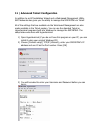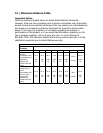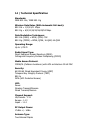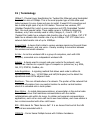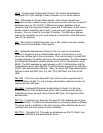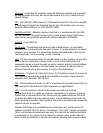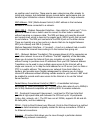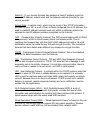
Static IP - If your Service Provider has assigned a fixed IP address; enter the
assigned IP address, subnet mask and the gateway address provided by your
service provider.
Subnet Mask - A subnet mask, which may be a part of the TCP/IP information
provided by your ISP, is a set of four numbers configured like an IP address. It is
used to create IP address numbers used only within a particular network (as
opposed to valid IP address numbers recognized by the Internet.
TKIP - (Temporal Key Integrity Protocol) The TKIP process begins with a 128-bit
"temporal key" which is shared among clients and access points. Then it
combines the temporal key with the client's MAC address and adds a 16-octet
initialization vector to create the key that will encrypt the data. This procedure
ensures that each station uses different key streams to encrypt the data.
TCP/IP - Transmission Control Protocol/Internet Protocol. This is the standard
protocol for data transmission over the Internet.
TCP - Transmission Control Protocol - TCP and UDP (User Datagram Protocol)
are the two transport protocols in TCP/IP. TCP ensures that a message is sent
accurately and in its entirety. However, for real-time voice and video, there is
really no time or reason to correct errors, and UDP is used instead.
UDP - User Datagram Protocol - A protocol within the TCP/IP protocol suite that
is used in place of TCP when a reliable delivery is not required. For example,
UDP is used for real-time audio and video traffic where lost packets are simply
ignored, because there is no time to retransmit. If UDP is used and a reliable
delivery is required, packet sequence checking and error notification must be
written into the applications.
Wi-Fi Protected Access (WPA)
– Wi-Fi Protected Access (WPA) is a set of
interoperable security improvements that greatly increase the level of data
encryption and authentication for existing and future wireless LAN systems. It
solves several issues with the widely used WEP standard.
Wired Equivalent Privacy (WEP) - “Wired Equivalent Privacy” is based on the use
of 64-bit or 128-bit keys and the popular RC4 encryption algorithm. Wireless
devices without a valid WEP key will be excluded from network traffic.






